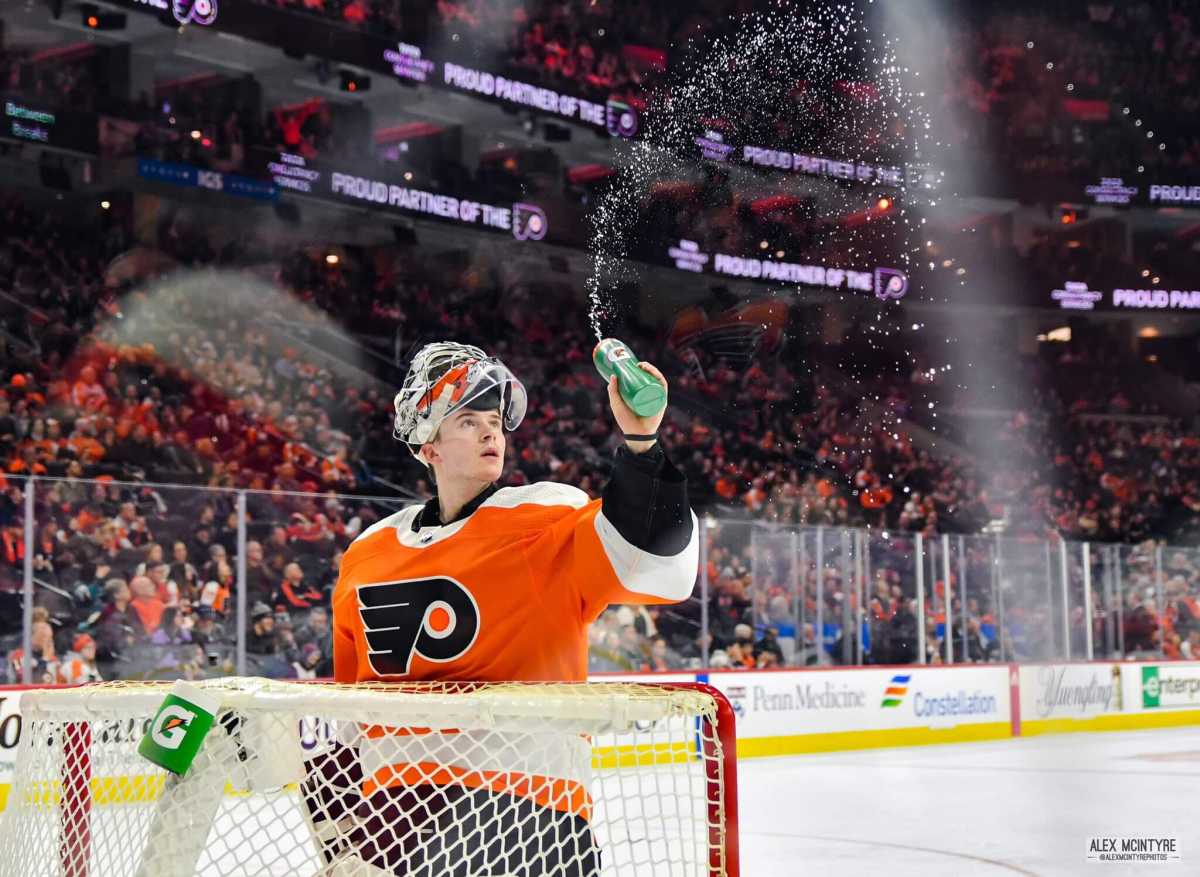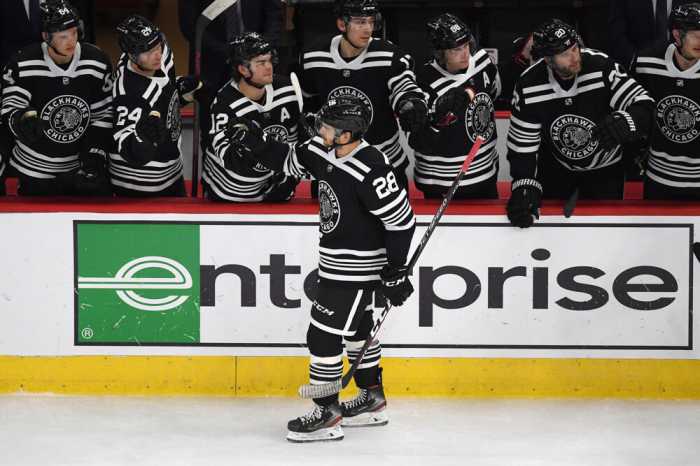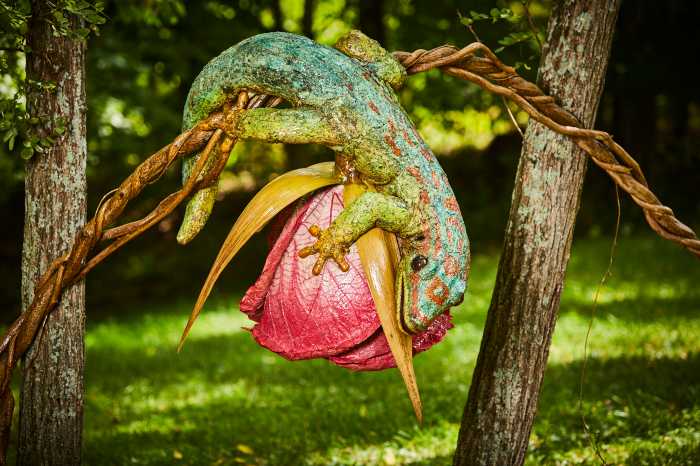Tomorrow, the Philadelphia Flyers enter their second ten-game stretch of the season. Seven of the next ten opponents are trending towards a playoff pace. Two pairs of games occur on back-to-back nights. Buzzwords like “culture” have already been put to the test. We’re going to see if these Flyers will fly or fall against top NHL teams.
I believe that you can get an idea of where a hockey team is going after ten games. A 6-2-2 record paces Philadelphia slightly ahead of their 2019-2020 start (5-4-1.) They’re on the way to support the 42-45 win mark I predicted, maybe even surpass.
Of course, this is all just a sample size. Here are a few observations, supported by numbers and team performance, that show this 2021-2022 Flyers team are trending in the right direction:
Depth Dominance
It’s easy to point towards Derick Brassard, Cam Atkinson, and Joel Farabee due to point production. Similar to the plus-minus statistic, point production doesn’t tell you who the best player is on the ice. It can help point in the right direction. Point production says the FAB Line is the second-best line on the team. Arguably, that distinction belongs to Oskar Lindblom, Scott Laughton, and James van Riemsdyk.
There are three players on the Philadelphia Flyers who played less than five games. We’re excluding Patrick Brown, Ryan Ellis, and Max Willman. Pardoning those names doesn’t change anything. Brassard, Atkinson, Farabee are the bottom rung during even-strength hockey, according to Corsi.
I’m willing to bet no one saw this coming.
Zack MacEwen, Nate Thompson, and Nicolas Aube-Kubel are marginally better than Farabee, Brassard, and Atkinson. There are more high percentage scoring chances for opponents when the Flyers‘ second line is on the ice.
Chuck Fletcher and Alain Vigneault collaborated to build a lineup that mitigates scoring chances. In terms of forwards, Farabee, Brassard, and Atkinson are all top seven in scoring. They’re doing one thing very well, which is creating scoring plays, not preventing them.
Top Line = Top Guys
Now that Cam Atkinson cooled down after having the hottest start in Philadelphia Flyers history, Claude Giroux and Sean Couturier are navigating these waters.
Couturier, Giroux, and Travis Konecny represent both offensive production and defensive precision. No matter the way you dice it, the top line is the top guys. The ability to flex a two-hundred-foot game makes these three forwards the best the Flyers have put on the ice this season. The tough love from Alain Vigneault to Konecny last year is paying dividends.
Let’s put last season to rest. Technically, Philadelphia had a better start through ten games in 2020-2021 (7-2-1.) Undeniably, they were a worse team during even-strength hockey. It’s why it was critical to get a physical fourth line to slow down opposing teams. An upgraded defense only helps slightly, considering we’re excluding Ryan Ellis because he played less than five games.
Comparably, Konecny is an upgrade from Jakub Voracek in 2021-2022. Voracek does have ten points in as many games, but I would argue Konecny’s stat line is more valuable. Four of his eight points are goals, providing an extra dimension to his point production.
In a contract season, Giroux is still as valuable as ever. He’ll hopefully stay with the Flyers, ushering in Couturier as the next team captain.
What Is Brown Doing for Philadelphia?
If anything, Patrick Brown is at least making it tough to put Nicolas Aube-Kubel in the lineup each night.
Alain Vigneault doesn’t have any plans to use Brown at the 4C in place of Nate Thompson. Zack MacEwen has settled as the 4LW after Max Willman ventured back to the Lehigh Valley Phantoms. There is one person at risk on the fourth line, and it’s Aube-Kubel.
I’m going against my rules. Brown hasn’t played five games, so how could I possibly say he earned Aube-Kubel’s spot? I’m not…yet. It’s trending that way, however.
The Philadelphia Flyers have a higher chance of facing off in the offensive zone than the defensive with Brown on the ice versus Aube-Kubel. Understandably, many metrics tilt in Brown’s favor because of the smaller sample size, but this one speaks clearly about how the team battles in the neutral zone when one player is on the ice instead of the other.
Sample size analytics could skew statistics adversely, but they don’t in this context. Aube-Kubel played seven games. Currently, Brown hasn’t taken bad penalties to put the penalty kill unit at risk. Aube-Kubel, through his high energy style, can be undisciplined at untimely moments. Brown has been more valuable in three games than Aube-Kubel has in seven.
Dillabaugh’s Boys
Remember when the Philadelphia Flyers had the worst goaltending tandem in the NHL? Like a quarterback after throwing an interception, I’ve decided to have a short memory too.
Last season wasn’t worth investing heavily. Chuck Fletcher didn’t, and his decision to play the long game into 2021-2022 was the right choice. He molded a defense to help Carter Hart, then Justin Braun helped sell Martin Jones.
Thank you, Brauner.
Alain Vigneault credits his goaltenders when he says they “gave the team a chance.” Hart and Jones continue to give the Flyers a chance. The eye tests show Hart making athletic saves on pucks that usually find the back of the net. It also proves that Braun was right about Jones, saying that most of the shots he faced recently with the San Jose Sharks were “unstoppable.” Behind a competitive defense, Jones is out to a 3-0-0 start.
Kim Dillabaugh is the glue bonding these two goaltenders. He’s a call back to Jones’ Stanley Cup championship with the Los Angeles Kings. He’s also the only goaltending coach to guide Hart in the NHL. In 2021-2022, his tandem combines for 93.3% save percentage, a 2.19GAA, and a combined record of 6-2-2.
Second Pair Success
I’ve been a critic of the partnership between Travis Sanheim and Rasmus Ristolainen. I wasn’t thrilled when Chuck Fletcher acquired Ristolainen. To get excited, I needed to see Sanheim be more than he was with Philippe Myers with his new partner. Ristolainen had to ensure the Philadelphia Flyers he was more than his last eight seasons reflect. Saturday night didn’t wipe away all doubt, but it was a highlight between the two.
Those who are skeptical aren’t wrong. Ristolainen and Sanheim, the only pair to remain intact through the first ten games, hadn’t performed well. Ivan Provorov and Justin Braun, a pairing that didn’t age well in 2020-2021, are aces without Ryan Ellis. Keith Yandle and Nick Seeler performed at a higher rate than Sanheim and Ristolainen to date.
On Saturday, Ristolainen needed to thrive. His opposition was a nasty Washington Capitals team. Where Tom Wilson was, Ristolainen waited.
Four hits later, Ristolainen did the heavy lifting. Sanheim, aside from the shutout victory versus the Arizona Coyotes, played his best game.
Over the next ten games, it’s critical the Flyers’ second defensive pairing builds upon their latest success.
Photo Credit: Alex McIntyre





























